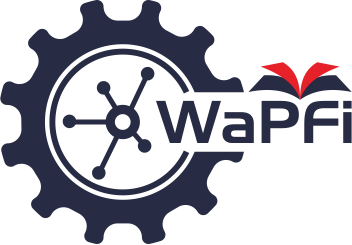Penerapan pendekatan STEM (Science, Technology, Engineering, Mathematics) Dalam meningkatkan kemampuan berpikir kritis dan hasil belajar siswa pada materi gaya, kerapatan, dan tekanan
Abstract
In the 21st century, rapid scientific and technological advancements have led to increased integration of knowledge. The fourth industrial revolution has emphasized the need for creative and critical thinking in education. To foster critical thinking, the independent learning curriculum has been implemented. However, many students, particularly in physics classes at SMA Negeri 50 Jakarta, lack critical thinking skills, resulting in low learning outcomes below the minimum passing grade (KKM). To address this, the STEM approach was adopted to enhance critical thinking and learning outcomes. The research's focus was to introduce STEM at SMA Negeri 50 Jakarta, aiming to investigate the impact of the STEM (Science, Technology, Engineering, Mathematics) approach on improving critical thinking and learning outcomes in the context of the Force, Density, and Pressure subject at the high school level. This quantitative study's objective was to empirically assess how the implementation of the STEM approach influenced students' critical thinking skills and learning outcomes in the subject. The research considered independent and dependent variables, with critical thinking ability as the dependent variable and the STEM teaching approach as the independent variable. The research design chosen was the Nonequivalent Pretest-Posttest Control Group Design, intending to observe the enhancement of critical thinking skills in the experimental group through STEM teaching. Initial data were derived from Grade XI students' final examination scores at SMA Negeri 50 Jakarta in the academic year 2022/2023. The study employed pretest and posttest scores as data collection tools, utilizing descriptive questions related to critical thinking indicators. By analyzing the difference between pretest and posttest scores and calculating the normalized gain, the study aimed to determine the improvement in critical thinking abilities in both classes.
Downloads
References
Ardianto, D., Firman, H., Permanasari, A., & Ramalis, T. R. (2019, April). What is Science, Technology, Engineering, Mathematics (STEM) Literacy?. In 3rd Asian Education Symposium (AES 2018) (pp. 381-384). Atlantis Press.
Astuti, A., Waluya, S. B., & Asikin, M. (2019). Strategi pembelajaran dalam menghadapi tantangan era revolusi industri 4.0. In Prosiding Seminar Nasional Pascasarjana (PROSNAMPAS) (Vol. 2, No. 1, pp. 469-473).
Hamidah, H., Leny, L., & Hamid, A. (2021). Analisis Berpikir Kritis dan Hasil Belajar pada Model Project Based Learning dengan Pendekatan Science, Technology, Engineering and Mathematics (STEM) Materi Sel Volta. JCAE (Journal of Chemistry and Education), 4(3), 101-107.
Indarwati, Syamsurijal, & Firdaus. (2021). Implementasi Pendekatan STEM Pada Mata Pelajaran Komputer dan Jaringan Dasar Untuk Meningkatkan Hasil Belajar Siswa SMK Negeri 2 Baras Mamuju Utara. Jurnal MediaTIK : Junal Media Pendidikan Teknik Informatika Dan Komputer, 4(1), 23–29.
Lestari, K, E., 1989- (pengarang); Mokhammad Ridwan Yudhanegara, 1986- (pengarang); Anna (editor). (2018). Penelitian pendidikan matematika : panduan praktis menyusun skripsi, tesis, dan laporan penelitian dengan pendekatan kuantitatif, kualitatif, dan kombinasi disertasi dengan model pembelajaran dan kemampuan matematis / Karunia Eka Lestari, M.Pd. , Mokhammad Ridwan Yudhanegara, M.Pd. ; editor, Anna. Bandung :; ©2015: Refika Aditama,.
Koyunlu Ünlü, Z., & Dökme, İ. (2022). A systematic review of 5E model in science education: proposing a skill-based STEM instructional model within the 21-st century skills. International Journal of Science Education, 44(13), 2110-2130.
Kumpas-Lenk, K., Eisenschmidt, E., & Veispak, A. (2018). Does the design of learning outcomes matter from students’ perspective?. Studies in Educational Evaluation, 59, 179-186.
Kusumaningtyas, D. A., Jumadi, M. P., Istiyono, E., & Abadi, P. V. V. (2020). Buku Panduan Mahasiswa untuk Pembelajaran STEM ISCIT.
Marin, L. (2020). Ethical reflection or critical thinking? Overlapping competencies in engineering ethics education. Engaging Engineering Education: Book of Abstracts, 1354-1358.
Pasquinelli, E., Farina, M., Bedel, A., & Casati, R. (2021). Naturalizing critical thinking: consequences for education, blueprint for future research in cognitive science. Mind, Brain, and Education, 15(2), 168-176.
Sandi, G. (2021). Pengaruh pendekatan STEM untuk meningkatkan pemahaman konsep elektroplating, keterampilan berpikir kritis dan bekerja sama. Indonesian Journal of Educational Development, 1(4), 579-585.
Sugiyono. (2019). Metode penelitian pendidikan: kuantitatif, kualitatif, kombinasi, R&D dan penelitian tindakan / Prof. Dr. Sugiyono. Bandung: Alfabeta.
Supit, D., Melianti, M., Lasut, E. M. M., & Tumbel, N. J. (2023). Gaya Belajar Visual, Auditori, Kinestetik terhadap Hasil Belajar Siswa. Journal on Education, 5(3), 6994-7003.
Surani, D. (2019, May). Studi literatur: Peran teknolog pendidikan dalam pendidikan 4.0. In Prosiding Seminar Nasional Pendidikan FKIP (Vol. 2, No. 1, pp. 456-469).
Sutrisno, M. (2020). Meningkatkan Minat Dan Hasil Belajar Tik Materi Topologi Jaringan Dengan Media Pembelajaran. Ahlimedia Book.






